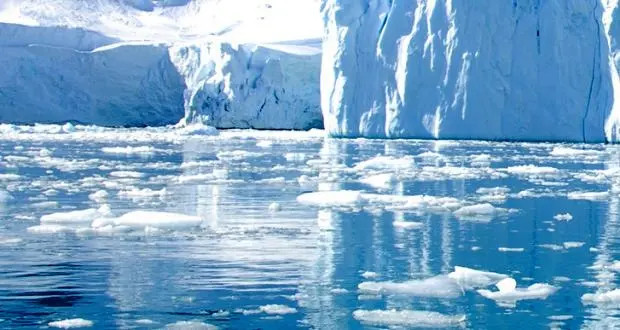Plastic pollution in Antarctic is worse than expected

The levels of microplastic particles accumulating in the Antarctic are much worse than expected, experts have warned. Although the Antarctic is considered as a pristine wilderness compared to other regions, new findings by scientists from the University of Hull and the British Antarctic Survey have revealed that recorded levels of microplastics are five times higher than expected to find from local sources, such as research stations and ships.
Microplastics are particles less than 5mm in diameter and are present in many everyday items such toothpaste, shampoo, shower gels and clothing. They can also result from the breakdown of plastic ocean debris.
The Southern Ocean, that covers approximately 8.5 million square miles and represents 5.4% of the world’s oceans, is under increasing threat from fishing, pollution and the introduction of non-native species, while climate change is leading to rising sea temperatures and ocean acidification.
While concern is growing about pollution from floating plastic debris, which can be become entangled with or ingested by wildlife, pollution by microplastics has received little scientific or regulatory attention, say the researchers.
Microplastics enter the oceans via wastewater and through the breakdown of plastic debris and have been shown to be persistent in surface and deep ocean waters and in deep sea sediments.
Dr Catherine Waller, an expert in ecology and marine biology at The University of Hull and co-author of the research, said that the Arctic ecosystem is very fragile with whales, seals and penguins consuming krill and other zooplankton as a major component of their diet. It is known from other studies around the world that these small animals can eat microplastics, but it is not sure what effect this will have on them or their larger predators.
“The University’s research highlights the urgent need for a co-ordinated effort to monitor and assess the levels of microplastics around the Antarctic continent and Southern Ocean and will form the basis of a policy paper to be presented at the 2018 Antarctic Treaty Consultative Meeting, the body that governs Antarctica, next year”, she said.
Tests have shown that a single polyester fleece jacket can release more than 1,900 fibres per wash, while around half of discarded plastics are buoyant in seawater and maybe subject to degradation by ultraviolet radiation and decomposition. More than half of the research stations in the Antarctic have no wastewater treatment systems, the research reports.
To estimate the level of microplastics currently in the Southern Ocean, the research team analysed existing data and samples taken from around the Peruvian base on King George Island.
It’s estimated that up to 500kg of microplastic particles from personal care products and up to 25.5 billion clothing fibres enter the Southern Ocean per decade as a result of tourism, fishing and scientific research activities. While this is negligible at the scale of the Southern Ocean, the researchers say it may be significant at a local scale.
Dr Huw Griffiths, a marine biogeographer with the British Antarctic Survey and co-author of the research, said: “In addition to tighter regional regulation on the use and release of plastics in the Southern Ocean, we believe that a greater understanding of their distribution and impact is required. To understand fully the sources and scale of this pollution would require an internationally co-ordinated effort.”















![AIRBUS A380 [MORE THAN 600 PASSENGER’S CAPACITY PLANE]](https://cdn.tinn.ir/thumbnail/4jCp4EQvCU0b/IjHVrSYQrIAqIzXuTzADR7qLYX4idQT4nfq__26E5SCUPLMqfhWkWajvuO9Wfq1ql1TjV4dhkrHliNQU82kMpo2NNftT_NGEwHc9KXtN_rk731bmifa2IQ,,/airbus-a380-structure1.jpg)

Send Comment